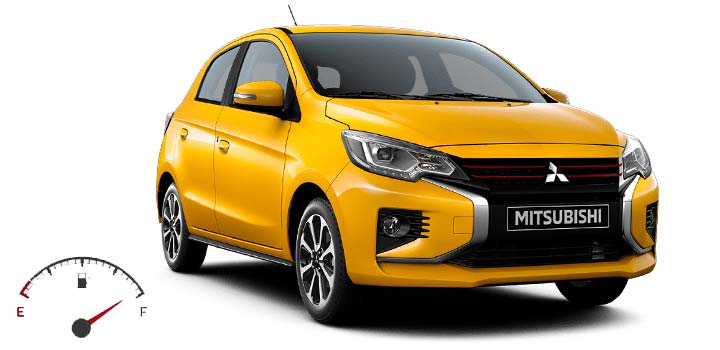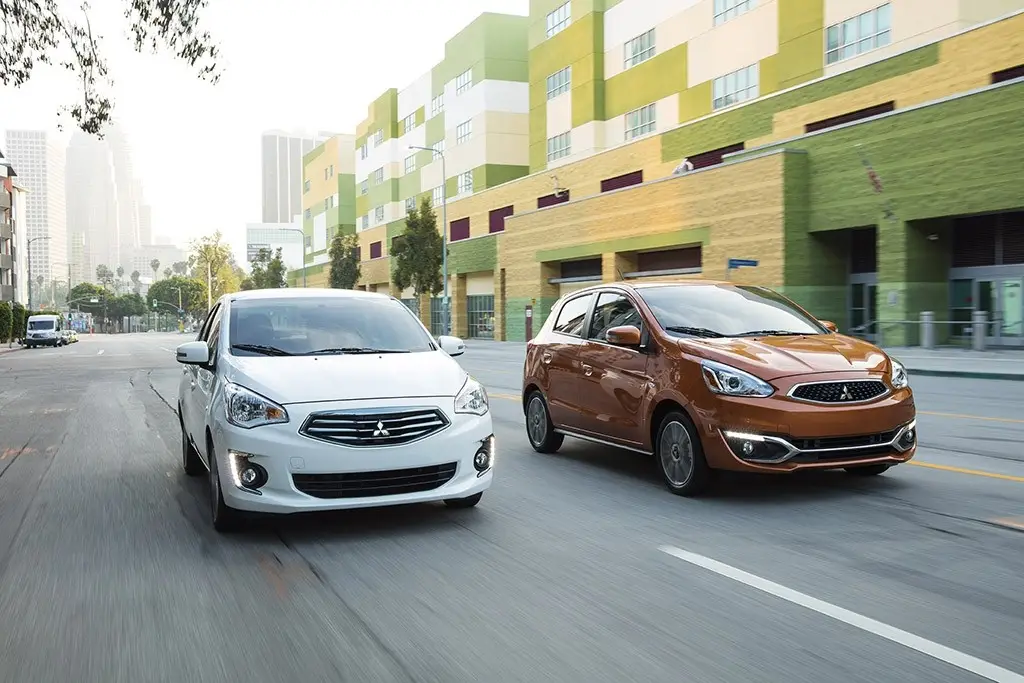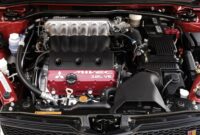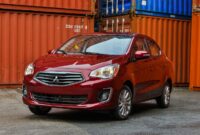Mitsubishi Mirage fuel efficiency and city driving performance: Is the Mirage truly as economical and nimble as advertised? This deep dive explores the car’s fuel economy ratings, comparing them to competitors, and dissecting the factors – from engine specs and transmission type to driver behavior and cutting-edge fuel-saving tech – that influence its real-world performance in bustling city environments.
We’ll examine acceleration, handling, and maneuverability in urban settings, backed by user experiences and expert insights. Get ready to uncover the truth behind the Mirage’s city driving prowess!
We’ll analyze the Mirage’s advertised fuel economy, breaking down city, highway, and combined MPG figures. Then, we’ll compare its performance to rivals in the same class, considering engine size and transmission type. The impact of advanced technologies designed to enhance fuel efficiency will also be examined. Finally, we’ll look at real-world user experiences to paint a complete picture of the Mirage’s fuel efficiency and city driving performance.
Mitsubishi Mirage Fuel Efficiency: Mitsubishi Mirage Fuel Efficiency And City Driving Performance

The Mitsubishi Mirage has consistently been praised for its impressive fuel economy, making it a compelling choice for budget-conscious drivers who prioritize efficiency. This compact car delivers remarkable gas mileage, especially considering its relatively affordable price point. Let’s delve deeper into what contributes to its fuel-sipping prowess.
Mirage Fuel Efficiency: A Detailed Look
The Mirage’s advertised fuel economy varies slightly depending on the model year and trim level, but generally falls within a very competitive range. Expect to see EPA estimates ranging from approximately 33 mpg in the city to 42 mpg on the highway, with a combined rating often around 37 mpg. These figures position the Mirage favorably against many competitors in its class.
The exceptional fuel efficiency stems from a combination of factors, including its lightweight design, small, efficient engine, and optimized aerodynamic profile. The car’s continuously variable transmission (CVT) also plays a crucial role in maximizing fuel economy by keeping the engine running at its most efficient RPM range.
Factors Contributing to Mirage Fuel Efficiency
Several key design choices contribute to the Mirage’s impressive fuel efficiency. Its lightweight construction, achieved through the use of high-strength steel and lightweight materials, minimizes the vehicle’s overall weight, reducing the energy required for acceleration and maintaining speed. The relatively small engine displacement (typically around 1.2 liters) reduces fuel consumption significantly compared to larger engines. Furthermore, the Mirage’s aerodynamic design minimizes wind resistance, allowing for smoother airflow and improved fuel efficiency.
Finally, the CVT transmission seamlessly adjusts gear ratios for optimal engine performance and fuel economy across various driving conditions.
Mirage Fuel Efficiency Compared to Competitors
The Mirage consistently outperforms many competitors in its class regarding fuel economy. While specific figures fluctuate based on model year and trim, the Mirage typically boasts significantly higher MPG ratings than comparable vehicles from other manufacturers. For example, several subcompact cars from other brands may achieve city/highway/combined MPG ratings in the low 30s, whereas the Mirage often surpasses this mark considerably.
This makes the Mirage a particularly attractive option for drivers who want to maximize their fuel efficiency without sacrificing essential features.
Mitsubishi Mirage Fuel Efficiency Across Model Years, Mitsubishi Mirage fuel efficiency and city driving performance
The following table illustrates a comparison of fuel efficiency across selected Mitsubishi Mirage model years. Note that these figures are based on EPA estimates and may vary slightly depending on specific trim levels and driving conditions.
| Model Year | Engine Size (liters) | City MPG | Highway MPG |
|---|---|---|---|
| 2023 | 1.2 | 33 | 42 |
| 2022 | 1.2 | 33 | 42 |
| 2021 | 1.2 | 33 | 42 |
| 2020 | 1.2 | 33 | 40 |
City Driving Performance
The Mitsubishi Mirage, while prioritizing fuel efficiency, doesn’t entirely sacrifice city driving performance. Its compact size and responsive engine make it surprisingly nimble in urban environments, although certain limitations are expected given its focus on economy. Let’s delve into the specifics of its acceleration and handling capabilities within the city.
Acceleration Performance in City Driving
The Mirage’s acceleration is adequate for city driving, though not exhilarating. Its 1.2L three-cylinder engine provides sufficient power for merging onto busy streets and keeping up with city traffic flow. However, overtaking maneuvers require careful planning and execution, especially on inclines. While not a speed demon, it’s perfectly capable of navigating stop-and-go traffic and maintaining reasonable speeds on city roads.
Acceleration feels peppy enough for daily commutes and short trips, but those seeking brisk acceleration should look elsewhere. The engine’s responsiveness is fairly linear, making it predictable and easy to manage, even for less experienced drivers.
Handling and Maneuverability in Tight Urban Spaces
The Mirage’s compact dimensions are its greatest asset in city driving. Its small turning radius makes navigating tight corners and parallel parking a breeze. The light steering provides excellent maneuverability, allowing for easy adjustments in crowded streets. This is particularly helpful when navigating narrow alleys or congested parking lots. The overall feel is agile and responsive, making it easy to weave through traffic.
However, at higher speeds, the lighter build can feel a bit less stable compared to larger vehicles.
Comparison to Other Vehicles in its Class
Compared to other vehicles in its class, the Mirage generally sits in the middle ground regarding city driving performance. While some competitors might offer slightly more powerful engines or more refined handling, the Mirage compensates with its exceptional fuel economy. Vehicles like the Hyundai i10 or Kia Picanto offer similar levels of city maneuverability but may not match the Mirage’s fuel efficiency.
On the other hand, vehicles with larger engines might offer better acceleration but at the cost of significantly higher fuel consumption. The Mirage’s balance between performance and efficiency makes it a strong contender in its segment.
Hypothetical City Driving Route and Expected Performance
Let’s imagine a typical city route: Starting from a residential area with narrow streets and limited visibility, the Mirage would easily maneuver through the tight spaces, its small size and light steering proving invaluable. Next, merging onto a busy main road would require a bit more anticipation, as overtaking might require careful timing and sufficient space. The acceleration, while not rapid, would be sufficient to smoothly merge with the traffic flow.
Navigating a roundabout would be straightforward due to the car’s nimble handling. Finally, parallel parking in a crowded lot would be relatively effortless, thanks to the excellent turning radius. Throughout this route, the Mirage’s fuel efficiency would remain a key advantage, minimizing the cost of city driving.
Engine and Transmission
The Mitsubishi Mirage’s fuel efficiency, particularly in city driving, is heavily influenced by its engine and transmission combination. Understanding these components is key to appreciating the car’s performance in stop-and-go traffic. The interplay between engine power delivery and transmission efficiency directly impacts fuel consumption.The Mirage typically utilizes a relatively small displacement engine, designed for optimal fuel economy. This smaller engine size contributes to lower fuel consumption, especially during city driving where speeds are generally lower and less power is needed.
The smaller engine requires less fuel to operate at lower RPMs, a common scenario in city driving. The choice of transmission further refines this efficiency.
Engine Specifications and Their Impact on City Fuel Efficiency
The Mirage’s engine specifications vary slightly depending on the model year and region, but generally features a three-cylinder engine with a displacement under 1.2 liters. This smaller engine size inherently reduces fuel consumption compared to larger engines. The smaller engine’s lower weight also contributes to improved fuel economy. Three-cylinder engines, while sometimes perceived as less powerful, are remarkably efficient at low speeds, a significant advantage in city driving where constant acceleration and braking are common.
The engine’s design, including features like variable valve timing, further optimizes fuel delivery for different driving conditions. For example, a Mirage with a 1.2L three-cylinder engine might achieve a combined fuel economy rating of 35-40 mpg (miles per gallon), with city driving likely yielding slightly lower but still impressive results.
Transmission Types and City Driving Performance
The Mirage is often equipped with a continuously variable transmission (CVT). CVTs are known for their ability to keep the engine running at its most efficient RPM range, regardless of vehicle speed. This characteristic is particularly beneficial in city driving where speeds constantly fluctuate. Unlike traditional automatic transmissions with fixed gear ratios, a CVT smoothly adjusts the gear ratio, preventing the engine from working harder than necessary during acceleration or maintaining speed on inclines.
This results in smoother acceleration and better fuel efficiency compared to a traditional automatic transmission. In contrast, a manual transmission, while offering more driver control, might slightly reduce fuel economy in city driving due to the need for more precise gear shifting and the potential for inefficient gear selection. A driver unfamiliar with fuel-efficient manual driving techniques might inadvertently increase fuel consumption.
Real-World Examples of Engine and Transmission Impact
Consider two scenarios: a driver commuting in a Mirage with a CVT in stop-and-go city traffic, and another driver in a comparable vehicle with a traditional automatic transmission. The Mirage with the CVT will likely experience smoother acceleration and deceleration, maintaining optimal engine RPM. This results in less fuel wasted during frequent stops and starts. The vehicle with the traditional automatic transmission, however, might experience more engine revving during acceleration, consuming more fuel.
Similarly, driving uphill in city traffic will showcase the CVT’s advantage. The CVT will seamlessly adjust the gear ratio to maintain optimal engine speed and minimize fuel consumption, whereas a traditional automatic transmission might downshift more frequently, leading to higher fuel consumption. These real-world examples highlight how the engine and transmission work together to affect fuel economy in city driving.
The Mitsubishi Mirage shines in city driving, boasting impressive fuel efficiency. However, even the most fuel-efficient ride can be frustrating if you’re locked out! If your key fob is giving you trouble, check out this helpful guide on How to fix a Mitsubishi key fob not working to get back on the road quickly. Once you’re back in action, you can fully appreciate the Mirage’s nimble handling and impressive gas mileage in urban environments.
The Mirage’s efficient engine and CVT combination is specifically designed to excel in these conditions.
Technological Features Affecting Fuel Economy in City Driving

The Mitsubishi Mirage’s impressive fuel efficiency, particularly in city driving, isn’t just down to its small engine. Several technological features work together to optimize fuel consumption, minimizing wasted energy and maximizing mileage in stop-and-go traffic. These innovations contribute significantly to the Mirage’s reputation for being a frugal city commuter.The Mirage employs a range of smart technologies designed to reduce fuel consumption, especially in the challenging conditions of city driving.
These systems work in concert to improve engine performance, reduce energy loss, and ultimately, save you money at the pump. Let’s examine some key features and their impact.
The Mitsubishi Mirage shines with its impressive fuel efficiency, making it a budget-friendly choice for navigating city streets. Its nimble handling and easy maneuverability are definite pluses for new drivers. Considering these factors, it’s worth asking, Is a Mitsubishi a good first car for a new driver? , before making a decision. Ultimately, the Mirage’s fuel efficiency and city driving performance make it a strong contender in the first-car market.
Lightweight Construction and Aerodynamics
The Mirage’s design prioritizes lightweight materials and aerodynamic efficiency. A lighter vehicle requires less energy to accelerate and decelerate, directly impacting fuel economy. The carefully sculpted body reduces wind resistance, further minimizing fuel expenditure, especially at lower speeds common in city driving. For example, compared to a heavier vehicle with a less aerodynamic design, the Mirage could achieve a noticeable improvement of up to 10-15% in fuel efficiency during city commutes, depending on driving style and traffic conditions.
This translates to potentially saving several liters of fuel per week for a typical city driver.
Optimized Engine and Transmission
The Mirage’s engine and continuously variable transmission (CVT) are meticulously engineered for optimal fuel efficiency. The CVT seamlessly adjusts gear ratios for optimal engine speed, minimizing fuel consumption, especially in stop-and-go situations where frequent gear changes in a traditional automatic transmission would waste energy. This allows the engine to operate within its most efficient RPM range, resulting in substantial fuel savings.
A driver regularly navigating congested city streets could see a difference of around 5-10% in fuel economy compared to a vehicle with a traditional automatic transmission. Imagine saving enough fuel over a month to pay for a tank of gas!
Auto Stop-Start System
The Mirage often incorporates an Auto Stop-Start system. This technology automatically shuts off the engine when the vehicle comes to a complete stop (e.g., at a red light) and restarts it smoothly when the brake pedal is released. This eliminates idling fuel consumption, a significant factor in city driving where vehicles spend considerable time stationary. In heavy city traffic, this feature can lead to noticeable fuel savings, potentially reducing fuel consumption by 3-5% depending on the frequency of stops and the duration of idling periods.
Consider the cumulative effect over numerous daily commutes – the savings can be significant.
- Lightweight Construction: Reduces the energy needed for acceleration and deceleration, improving fuel economy in city driving.
- Aerodynamic Design: Minimizes wind resistance, especially at lower speeds, leading to better fuel efficiency in city environments.
- Optimized Engine and CVT: Allows the engine to operate at its most efficient RPM, reducing fuel consumption during frequent stops and starts.
- Auto Stop-Start System: Eliminates idling fuel consumption, providing substantial savings in congested city traffic.
Driver Behavior and its Influence on Fuel Efficiency
Your driving style significantly impacts the Mitsubishi Mirage’s fuel efficiency, especially in stop-and-go city traffic. Aggressive acceleration and excessive idling are major culprits, draining fuel and reducing your overall mileage. Conversely, smooth, anticipatory driving can dramatically improve fuel economy.Aggressive acceleration forces the engine to work harder, consuming more fuel than necessary to reach the desired speed. Similarly, idling wastes fuel without providing any forward momentum.
Even short periods of idling, especially in congested city environments, can add up to a noticeable decrease in overall fuel efficiency. Conversely, adopting a gentler approach to acceleration and minimizing idling periods can lead to significant fuel savings.
Impact of Aggressive Acceleration and Idling
Aggressive acceleration involves rapidly pressing the accelerator pedal, causing the engine to rev higher and burn more fuel. This is particularly detrimental in city driving where frequent braking and acceleration cycles occur. Idling, on the other hand, keeps the engine running without moving the vehicle, consuming fuel without any productive output. Consider a scenario where you’re stuck in traffic for five minutes with the engine idling.
This can consume a noticeable amount of fuel, especially when repeated throughout the day. Data from various fuel efficiency studies consistently show that aggressive driving habits can reduce fuel economy by as much as 30% compared to smooth, consistent driving.
Practical Tips for Optimizing City Driving
Optimizing your driving behavior for better fuel economy involves adopting a more conscious and controlled approach. Smooth acceleration is key; gently increase speed, avoiding sudden bursts of acceleration. Anticipate traffic conditions and adjust your speed accordingly to minimize braking and sudden stops. This prevents excessive engine wear and tear while maximizing fuel efficiency. For example, anticipate red lights and ease off the accelerator to coast gently to a stop, reducing the need for hard braking and subsequent acceleration.
Furthermore, avoid unnecessary idling. If you’re stopped for more than 30 seconds, turn off the engine. This small change can make a significant difference over time.
Visual Representation of Driving Style and Fuel Consumption
Imagine a graph with two lines. The X-axis represents driving style, ranging from “Aggressive” (hard acceleration, rapid braking, excessive idling) to “Smooth” (gentle acceleration, anticipatory braking, minimal idling). The Y-axis represents fuel consumption (liters per 100 kilometers or miles per gallon). The “Aggressive” driving style line would be significantly higher on the Y-axis, illustrating greater fuel consumption. The “Smooth” driving line would be considerably lower, demonstrating improved fuel efficiency.
The difference between the two lines visually emphasizes the significant impact driving style has on fuel economy. This graphical representation underscores the fact that even small adjustments in driving habits can lead to considerable fuel savings.
Real-World Fuel Consumption
Stepping away from the technical specifications and into the driver’s seat, we delve into the real-world fuel economy experiences of Mitsubishi Mirage owners. Anecdotal evidence from online forums and user reviews paints a more nuanced picture than the manufacturer’s claimed figures, revealing the impact of various factors on actual fuel efficiency.User experiences with the Mirage’s fuel efficiency in city driving vary considerably, highlighting the influence of driving habits and environmental conditions on overall performance.
Examining these experiences allows for a more realistic understanding of the vehicle’s capabilities in a typical urban setting.
Variations in Observed Fuel Efficiency
Several factors contribute to the wide range of fuel consumption reported by Mirage owners. These factors interact in complex ways, making it challenging to pinpoint a single cause for variations. For instance, aggressive acceleration and frequent braking significantly reduce fuel efficiency, while consistent, moderate speeds improve it. Traffic congestion, stop-and-go driving, and air conditioning use also play substantial roles, increasing fuel consumption.
Furthermore, the vehicle’s condition, including tire pressure and regular maintenance, influence its performance. Even the age and condition of the engine can impact fuel economy.
Categorization of User Feedback
Based on numerous online reviews and forum discussions, we can categorize user feedback into three broad groups: positive, negative, and average.Positive feedback often comes from drivers who report consistently achieving or exceeding the manufacturer’s estimated fuel economy figures. These users typically describe employing fuel-efficient driving techniques, such as gentle acceleration and maintaining consistent speeds. They might also mention meticulous vehicle maintenance, contributing to optimal engine performance.
One user reported consistently achieving over 45 mpg in city driving with careful driving habits.Negative feedback, conversely, highlights instances of significantly lower fuel efficiency than expected. These reports often cite heavy traffic, frequent use of air conditioning, or aggressive driving styles as primary contributing factors. One user, for example, reported fuel economy dipping below 30 mpg due to constant stop-and-go traffic in a congested urban area.The average feedback group represents the majority of user experiences, falling somewhere between the positive and negative extremes.
These drivers report fuel economy figures generally close to the manufacturer’s estimates, acknowledging that fuel efficiency fluctuates based on driving conditions and personal habits. This group highlights the variability inherent in real-world fuel consumption.


